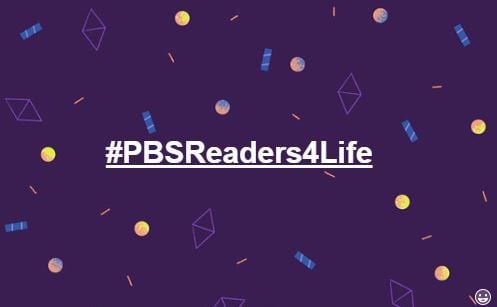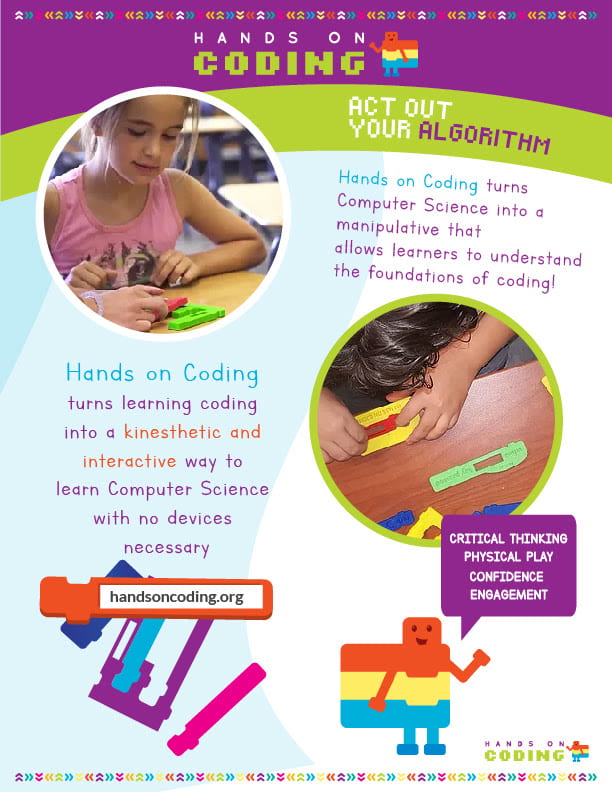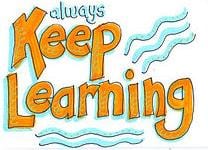Weekend Ed. Quote ~ February 28
Feb
28
Feb
28
Guest post with Amelia Wildman, MEd and current doctoral student at the College of William and Mary.
The responses to our recent presentation at the CCE Symposium in Finland was so kind. Many in attendance requested additional information on specific implementation of How-focused questioning. Also requested were effective question stems for How-Focused Questions.
Amelia writes, “At its core, creativity involves thinking about something in a meaningful, original way. Strategies that develop students’ abilities to think creatively can also serve the purpose of helping them build skills in analyzing and evaluating what they read.”
How-Focused Strategy: A specific how-focused strategy for strengthening students’ creativity is metaphorical thinking. Metaphorical thinking is about connecting different ideas in order to develop a new perspective or understanding: the qualities and contexts of one idea are paired with those of another in order to make connections. Incorporating metaphorical thinking activities can promote students’ fluent thinking – generating many ideas; flexible thinking – considering different perspectives; and original thinking – developing insights that are unique and complex. Specific strategies for incorporating metaphorical thinking activities into the classroom will be discussed, with a specific focus on metaphorical thinking and developing skills in writing.”
Research-based instructional component (IC): How-focused questions components are integral to students’ content acquisition. How-focused questions are part of questioning for:
1. Clarification
2. Probing Assumptions
3. Probing Rationales
4. Questioning Viewpoints
5. Probing Consequences
6. Questions on the Question
How-focused questions are a component of an effective Socratic questioning approach. Here are a few Question stems featuring a Socratic assertion. From these seven stems a complete questioning curriculum in any content area is possible.
Watch this video that addresses deterrents to poor questioning.
References
Berger, W. (2013). What Kills Questioning? (Book trailer for A MORE BEAUTIFUL QUESTION by Warren Berger). Youtube. Available online at this link: https://youtu.be/dey1Rm5gUxw
Bélanger, Annie and Rao, Preethi, “The Art of Questioning: Using Powerful Questions and Appreciative Inquiry Conversations to Understand Values and Needs” (2019). Presentations. 79.
https://scholarworks.gvsu.edu/library_presentations/79
PLEASE NOTE: This post original published February 28, 2019. Updated May 30, 2019 with additional citation information.
Feb
25
A recent ice storm caused my retreat from the roadways and outside activities. My indoor inertia was replaced with the indulgence of re-reading my online team process journals. These journals include observations, quotes of team members, ideas for future research, links to current research, and a few doodles. I remain committed to the learning power which emanates from doodles, but time to search for cooraborating research eludes me.
As I turned the paper pages of the journals a quote from an online research team member caught my attention. Our team, led by Dr. Eric Hamilton featured a conversation with Dr. Paulina Sameshima.
Dr. Sameshima’s dialogue during this particular meeting addressed how learners templatize thought for neural efficiency. Dr. Hamilton and Dr. Sameshima catelyzed a discussion on meaning-making. My research teammate, in response said,
“We bifurcate on default”
My margin notes then echoed my astonishment at the level of understanding engendered from my research teammate. I wondered if the technological affordances of a synchronous meeting held within a communal space simultaneously shared through the online affordance of Fuze amid the separated environments of each of our individual locations coalescenced and liberated insights such as my teammate shared.
“We bifurcate on default”
There is a protection that emerges for online exchanges whether they be confined to formal learning spaces of online courses, webinars, and synchronous team meetings or informal learning spaces of chats, status updates, benchmark updates and the like.
Both online participants and facilitators for new identities situated within the online community (Brown, et al. 1989; Ito, Kafai, Teague, 2017; Turkle, Wenger and Wenger, 2016). We may become a new version of ourself, embodying attributes of the self that are restricted or confined in the world of our face-to-face interactions. Through the participatory spontaneity of online discourse coupled with the identity safeguards of our physical environments, insights are formed and shared. Growth branches and, as Vygotsky wrote, this development precedes learning.
Permenant Link: https://tinyurl.com/ParticipatoryOnlineIdentity
Sameshima, P. (2007). Seeing red: A pedagogy of parallax: An epistolary bildungsroman on artful scholarly inquiry. Cambria Press. Amazon
Background polling supplemental research: As of January 2014: • 90 percent of American adults have a cell phone. • 58 percent of those have a smartphone (the number soars to nearly 80 percent for those between 18 and 49). • 42 percent have a tablet.1 It’s a truly different, more informed and more connected world. SOURCE: 1 – http://www.pewinternet.org/fact-sheets/mobile-technology-fact-sheet/
Feb
18
 Research-based support for doodling as an imprint for reading comprehension
Research-based support for doodling as an imprint for reading comprehension
Encouraging students to journal and doodle while they read is an excellent way to strengthen comprehension (Durkin, 1978; Karten, 2017; Schott, 2011).
Research support new ways of applying what students do while they read with avenues for future instructional activities.
Journaling/Doodling/Mindmapping is a wonderful modification for students with dyslexia and/or ADD/ADHD, or those students whose reading fluency is slower.
One student in one of the high school classes I taught was very sensitive to activity, movement, changes in routine, and changes in voice. Taking notes required too much channeling of energy so we came up with the idea of doodling and mindmapping his notes. His parents were astounded at the transformation in his calmer energy level and ability to retain comprehend what he read.
Also, among the older adults I work with who have survived a stroke, doodling and visual representation of their thoughts has been described by them as “nurturing” and “like a vacation.” In addition to our course reasources, much additional research points to these same effects and I have cited three of my favorites. (Durkin, 1978; Karten, 2017; Schott, 2011).
So, build in some doodling time this week or at least before Spring Break!

#PBSReaders4Life
References
Durkin, D. (1978). What classroom observations reveal about reading comprehension instruction. Center for the Study of Reading, University of Illinois at Urbana-Champaign. Available online at this link: https://www.ideals.illinois.edu/bitstream/handle/2142/17858/ctrstreadtechrepv01978i00106_opt.pdf?sequence=1
Karten, N. (2017). Doodle your way to improved focus and concentration. TechWell. Available online at this link:
https://www.ideals.illinois.edu/bitstream/handle/2142/17858/ctrstreadtechrepv01978i00106_opt.pdf?sequence=1
Schott, G.D. (2011). Doodling and the default network of the brain. The Lancett. VOLUME 378, ISSUE 9797, P1133-1134. DOI:https://doi.org/10.1016/S0140-6736(11)61496-7
~~~
Feb
15
“I never dreamed about success, I worked for it.” – Estee Lauder, Entrepreneur

Feb
12
 What’s the all-time best Valentine’s Book/Story?
What’s the all-time best Valentine’s Book/Story?For me, it’s Pride and Prejudice. Both PBS and Amazon Prime feature the best movie/mini-series version starring Colin Firth.
PBS even has background info on some of the salient narrative points. https://www.pbs.org/newshour/tag/pride-and-prejudice
Here is a list of best Valentine’s stories for grade school kids: https://www.thoughtco.com/top-childrens-books-for-valentines-day-627613
Also, I found this list of “Sweet Stories for a Sweet Holiday”
https://www.weareteachers.com/childrens-books-to-celebrate-valentines-day/
Here is a list announcing books for children ages 1-18:
https://www.peanutblossom.com/blog/valentines-day-books/
Click here for some of the this blog’s previous Valentine’s Day posts.
Feb
11
Without Prof Guidance, Prolly Still True: Universities should ban PowerPoint. It makes students stupid and professors boring. https://t.co/UIfsma4Kj7 via @businessinsider
— Helen Teague (@TweetTeague) April 7, 2019
What alternatives are there to PowerPoint?
Reference
Paul Ralph, August 25, 2017. Universities should ban PowerPoint. It makes students stupid and professors boring. Retrieved from https://www.businessinsider.com/universities-should-ban-powerpoint-it-makes-students-stupid-and-professors-boring-2015-6
Feb
10
“Love of the Link” is a new 2019 feature that spotlights a powerhouse website with at least three interactive features:
Although “Love of the Link” is a new feature to this blog, the resources may be tried-and-true, legacy portals online.
Hands on Coding is an interactive way to learn coding kinesthetically with no device or ipad needed. Since it does not require additional hardware, it is accessible to more students, teachers, and families. Hands on Coding uses physical coding blocks that can be put together to create an algorithm and can then be acted out.

Feb
8
“Every act of conscious learning requires the willingness to suffer an injury to one’s self-esteem.” ~Dr. Thomas Szasz, Professor, State University of New York, (b. 1920- d. 2012)
